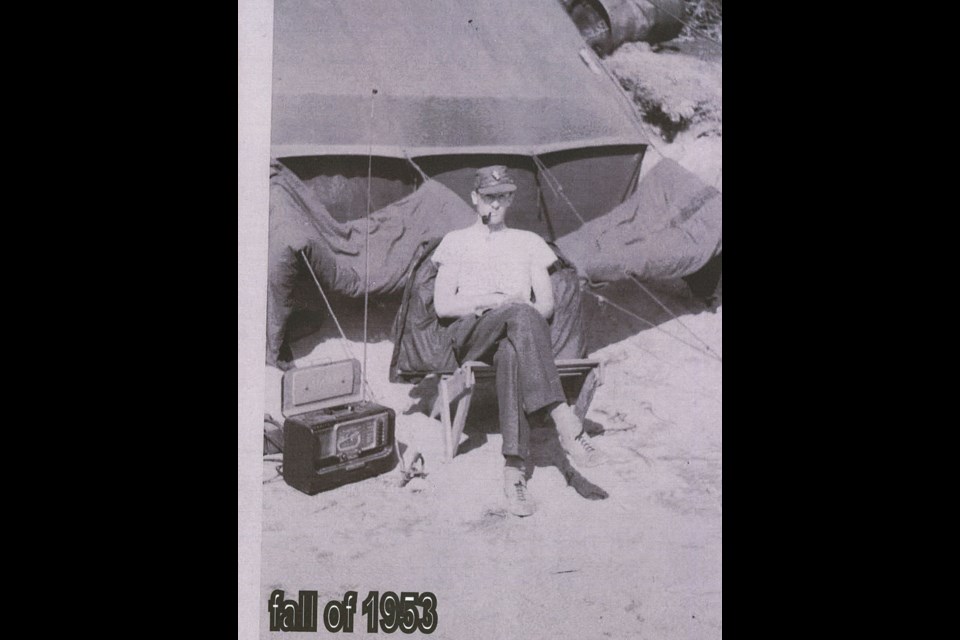Charlie Smith doesn’t consider his time during the Korean War that exciting, but his efforts ensured that Canada’s armoured vehicles were returned to fighting shape after engaging with the enemy — or falling into rice paddies.
Born near Davidson, Sask. in 1928, Smith was 22 when the Korean War started on June 25, 1950, after the North invaded the South.
Smith was working on a farm when he realized he would never get ahead in life performing that work. Luckily, it was an army advertisement — “See some of the world and learn a trade” — that piqued his interest and prompted him to enlist in 1950.
The farm boy eventually joined the Royal Canadian Electrical and Mechanical Engineers (RCEME) Corps as a heavy mechanic who looked after gas- and diesel-powered vehicles. He was given the rank of craftsman.
“I could have been a corporal, but that doesn’t pay,” said Smith, 93. “You don’t get pay for rank until you’re a sergeant. And where I was, a sergeant wasn’t included in there in the ranks.”
Smith was sent to Kingston, Ont. to train for nearly two years. While that was a good experience, he and other soldiers didn’t attempt to make friends with the locals — or find girlfriends — since they knew their time there would be short.
The RCEME shipped out to Korea by boat in April 1952. The Corps was attached to the Royal Canadian Horse Artillery since it was believed the latter unit would move its weapons by tracked vehicles. However, the engineers discovered that the artillery unit was moving its weapons using vehicles with tires.
Smith ended up about 40 kilometres north of Seoul near the border with the Communists. They remained in that area for the remainder of the war.
“The Chinese played games. They teased you (by firing artillery),” he said. “I didn’t see action. We were in the follow-up to show them that we were still there … . I did not shoot anybody. And wherever I went, they (mostly) didn’t shoot at me.”
While Smith had trained as a mechanic, he was given responsibilities to move equipment and vehicles. This included moving tanks and heavy trucks that broke down or became stuck.
Many times, it wasn’t easy to move the vehicles since water-filled rice paddies surrounded the roads. Yet, anything wheeled or tracked had to stick to the main paths for fear of becoming stuck while driving off-road.
“I never got stuck,” Smith said proudly.
Smith was limited in travelling in Korea and didn’t associate with anyone but his comrades. Moreover, he couldn’t leave his vehicle even in friendly territory because the locals usually attempted to con the soldiers.
“You had to stay with your truck, or they’d steal everything off it,” he laughed. “When you parked, somebody would slip up; they would want to ‘sell’ you a spare tire.”
Smith never met anyone famous in Korea, while he never joined guys who drank alcohol since he didn’t enjoy those beverages. This meant, however, that he was usually on call 24 hours a day.
One interesting experience he had was at Christmas. On Christmas Day, the officers served their men food as part of a long-standing tradition. However, the commanding officer of Smith’s unit was not pleased to perform this task and asked the staff sergeant how long it would take to send the crews out to search for disabled vehicles. Two minutes was the reply.
“Before a vehicle moved, it had to have a work order of what it was going to do. (The staff sergeant) said it wouldn’t be much of an emergency if you spent an hour looking for someone to sign a work order, so we had (the commanding officer) sign it for the full month,” said Smith.
Smith and his crew missed Christmas dinner since they spent the day looking for wrecks and broken-down vehicles.
The Korean War ended on July 27, 1953, with a truce between the Communists and the United Nations. Smith and the RCEME were shipped home in 1954 but stopped in Yokohama, Japan, by boat first. They were given two hours to exercise, while they also experienced Japanese culture and cuisine.
“That was a really nice experience,” he added.




